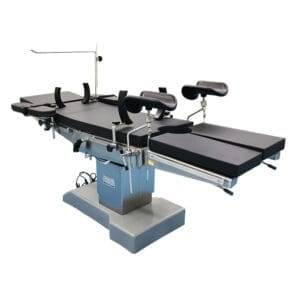Адрес
304 North Cardinal St.
Дорчестер-центр, Массачусетс 02124
Часы работы
С понедельника по пятницу: с 7:00 до 19:00.
Выходные: 10.00 - 17.00
Pediatric surgery demands a unique blend of precision, compassion, and specialized equipment. At the heart of this intricate dance lies the pediatric operating table—a canvas where delicate procedures are painted with care. However, designing these tables comes with a unique set of challenges that require a deep understanding of pediatric patients’ distinct needs. This article delves into the multifaceted challenges associated with designing pediatric operating tables, exploring the nuances of size, safety, ergonomics, anesthesia considerations, and the relentless pursuit of excellence in pediatric surgical care.
 Distinct Dimensions
Distinct DimensionsPediatric operating tables must address the unique anatomical and physiological characteristics of children, necessitating specialized designs that align with their size and developmental stages.
Children’s anatomies vary significantly across age groups. Designing a table that can accommodate the smallest neonate to a growing adolescent requires precision and adaptability.
Pediatric patients are more vulnerable to anesthesia risks and post-operative complications. Operating tables must integrate safety mechanisms to ensure patient stability during procedures.
Ergonomics plays a crucial role in pediatric surgery. Designing tables that facilitate surgeon comfort and minimize physical strain while accommodating smaller patients is a complex puzzle.
Anesthesia administration for children requires careful monitoring and access to the patient. Operating table design must facilitate secure positioning while allowing anesthesia teams optimal access.
Pediatric patients are continually growing. Designing tables that can adapt to their changing dimensions over time is a challenge that necessitates forward-thinking engineering.
Creating a child-friendly environment in the operating room contributes to patient comfort and reduces anxiety. The design must consider visual elements, colors, and distractions for pediatric patients.
Infection control is paramount in pediatric surgery. The table’s surfaces must be smooth, non-porous, and easy to clean, minimizing the risk of infections.
Choosing appropriate materials for the table’s padding and surfaces requires a delicate balance between patient comfort and infection control.
 Multidisciplinary Collaboration
Multidisciplinary CollaborationPediatric surgeries often involve a diverse surgical team. The table’s design must accommodate various specialists’ needs while maintaining patient-centered functionality.
Designing pediatric operating tables involves compliance with stringent safety and quality regulations to ensure that the equipment meets the highest standards of care.
Q1: Are pediatric operating tables significantly different from adult tables?
A1: Yes, pediatric operating tables are designed with unique considerations, including size variability, safety mechanisms, anesthesia access, and ergonomic adaptations.
Q2: How do pediatric operating tables address the challenge of patient growth?
A2: Some pediatric operating tables are designed with adjustable features to accommodate the changing dimensions of growing children, ensuring long-term usability.
Q3: What role does infection control play in pediatric table design?
A3: Infection control is vital. Pediatric operating tables must be designed with smooth, non-porous surfaces that are easy to clean, minimizing the risk of infections.
Q4: How do pediatric operating table designers ensure regulatory compliance?
A4: Designers of pediatric operating tables work closely with regulatory bodies to ensure that the equipment meets strict safety and quality standards.
Designing pediatric операционные столы is a multidimensional challenge that requires a deep understanding of pediatric patients’ unique needs and a commitment to precision, safety, and patient-centered care. As surgical innovation continues to advance, the design of pediatric operating tables will remain at the forefront of enhancing surgical outcomes for the smallest patients. Each consideration—from size variability to infection control—is a piece of the puzzle that contributes to the delicate dance of pediatric surgical excellence. Through innovation, collaboration, and an unwavering dedication to the well-being of young patients, the challenges of designing pediatric operating tables are met with a resounding commitment to the art and science of pediatric surgery.
